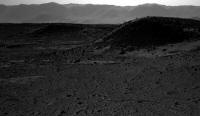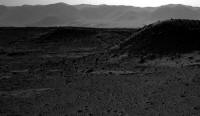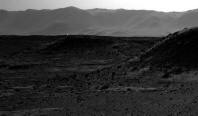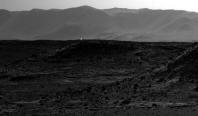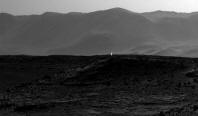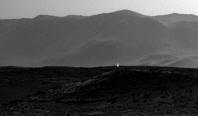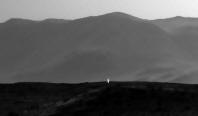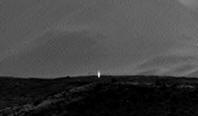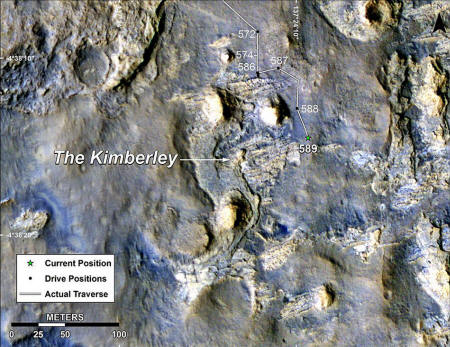|
by Carol Christian
artificial light
emanating outward from the planet's surface.
A NASA camera on Mars has captured what appears to be artificial light emanating outward from the planet's surface.
Photos taken April 2 and April 3 by a camera on the Curiosity rover were beamed millions of miles from Mars to the Jet Propulsion Laboratory in Pasadena, Calif.
According to NASA, a bright spot appears in single images taken by the stereo camera's "right eye" camera, but the spot doesn't show up in images taken less than a second later by the left-eye camera.
In the two right-eye images, the spot is in different locations of the image frame, and, in both cases, at the ground surface level in front of a crater rim on the horizon, Justin Maki, a NASA imaging scientist said April 8 by email through a spokesman.
Another possibility is that the bright spots are sunlight reaching the camera's image sensor through a vent hole in the camera housing, which has happened before with Curiosity and other Mars rovers, the agency said.
Another possibility is that it's a cosmic ray striking the camera's detector, he added. Before NASA offered a suggestion of what might be the source of the bright spots, bloggers and space enthusiasts started chiming in.
Scott C. Waring, who maintains the website UFO Sightings Daily, posted the photo April 6.
Waring noted that the light shines upward, as if from the ground, and is very flat across the bottom.
On Tuesday, Slate.com's Bad Astronomy blog suggested that a UFO conspiracy site might not be the best source of information for exploring serious planetary phenomena.
A more serious source of this light, said blogger Phil Plait, is that,
Earlier this month, NASA announced that on April 2, the Curiosity rover drove the last 98 feet needed to arrive at "the Kimberley," a spot where it can study rock clues about ancient environments that might have been favorable for life, according to a news release.
The Kimberley, where four different types of rock intersect, is named for a region of western Australia.
The rover's stay there has been planned since early last year, the release said.
Melissa Rice is the scientist in charge of planning several weeks of observations, sample-drilling and on-site laboratory analysis of the area's rocks.
Arrival at this location means Curiosity has driven 3.8 miles since August 2012, when it landed inside Mars' Gale Crater.
The Kimberley investigations are to be the most extensive since Curiosity spent the first half of 2013 in an area called Yellowknife Bay, the release said. At Yellowknife Bay, the one-ton rover examined the first samples ever drilled from rocks on Mars.
These samples showed signs of an ancient lakebed environment that provided the chemical ingredients and energy necessary for life, the release said.
At the Kimberley and, later, at outcrops on the slope of Mount Sharp inside Gale Crater, researchers plan to use Curiosity's science instruments to learn more about habitable past conditions and environmental changes.
|

